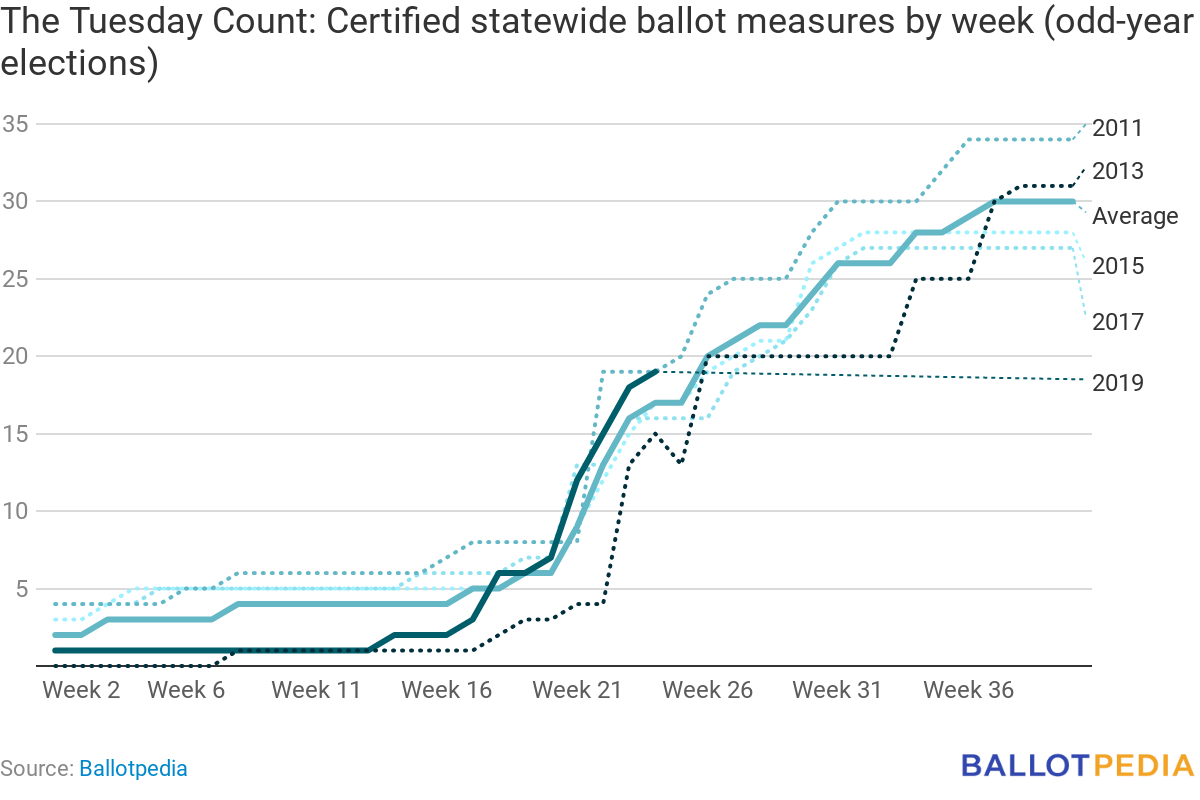Voters to decide at least 19 statewide ballot measures in five states this year
In the last few months, I’ve brought you stories about individual ballot initiatives that will be decided by voters in 2019. As we near the halfway point in the year, let’s take the temperature of where things stand so far.
19 statewide ballot measures have certified for the 2019 ballot in five states—Colorado (two), Kansas (one), Louisiana (four), Texas (10), and Washington (two). In Louisiana, the measures will appear on the October 12 primary election ballot. The other measures certified so far will be decided by voters on November 5.
Of the 19 measures, 18 were referred to the ballot by state legislatures and one was placed on the ballot via citizen initiative. That initiative, in Washington, seeks to limit annual license fees and taxes on motor vehicles.
Some of the topics which voters will address in these measures include transportation, taxes and tax exemptions, revenue allocation and budgets, the census, education, animal care, bonds, and the administration of government.
In the past four odd-numbered years, the average number of certified statewide measures by this date was between 16 and 17, and the average total number of statewide measures was 30. In 2017, 27 statewide measures were certified.
 Four states—Colorado, Maine, Ohio, and Washington—allow for citizen-initiated ballot initiatives or veto referendums in elections in odd-numbered years. The next upcoming signature submission deadlines for citizen initiatives in those states are on July 3 (Ohio) and July 5 (Washington). Legislatively referred measures can also be approved in those four states in 2019. Other states that frequently feature statewide measures in odd-numbered years include Louisiana, New Jersey, New York, and Texas. Four states—Colorado, Maine, Ohio, and Washington—allow for citizen-initiated ballot initiatives or veto referendums in elections in odd-numbered years. The next upcoming signature submission deadlines for citizen initiatives in those states are on July 3 (Ohio) and July 5 (Washington). Legislatively referred measures can also be approved in those four states in 2019. Other states that frequently feature statewide measures in odd-numbered years include Louisiana, New Jersey, New York, and Texas.
|